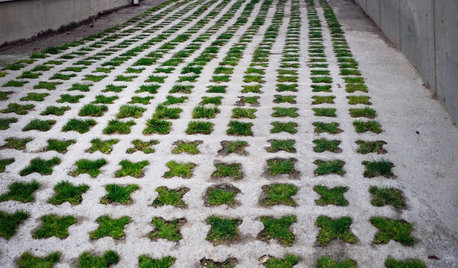limestone grit and sowing alpines
marjoriemercure
19 years ago
Related Stories

EARTH DAYHow to Build a Greener Driveway
Install a permeable driveway to keep pollutants out of water sources and groundwater levels balanced
Full StoryHi,
I bought poultry grit from a local agriculture coop. They had only one kind, and when I opened the bag I saw that the grit is made from limestone. A bubbly reaction with vinegar confirmed it. I guess other coops in the area all get their grit from the same supplier and they don't sell other brands. I don't know where to get granite grit (I'm from Quebec).
What could I use to replace grit when sowing calcifuge alpines? Do you get good result with mixes of commercial potting mix and sand or perlite? What do you use for topping to prevent crown rot and damping off instead of grit? Any tips about sowing techniques would be appreciated. I had little success with regular promix, with seedlings emerging but dying very shortly after, apparently not all of damping off (I also tried with no-damp fungicide) but of unknown causes.
Thanks!
Marjorie

grandmasgarden
leftwood
abgardeneer
leftwood
abgardeneer
leftwood
abgardeneer
GardenChicken
abgardeneer
leftwood
abgardeneer
leftwood
abgardeneer